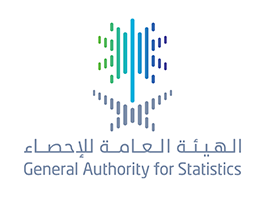
مدير المصلحة: تحويل الاحصاءات الى هيئة يصنع شراكات فاعلة
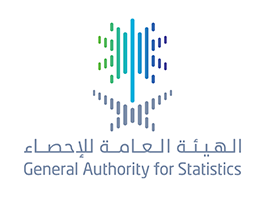
الهيئة العامة للإحصاء : ارتفاع الصادرات وانخفاض الواردات السلعية للمملكة العربية السعودية في الربع الأول 2017
GaStat: An Increase in Exports and a Decrease in Merchandise Imports of Saudi Arabia (1st quarter-2017)
The value of merchandise exports of Saudi Arabia during the first quarter of 2017 amounted to (206984) million riyals compared to (140186) million riyals for the same quarter last year, with an increase of (66799) million riyals (47.7%). While non-oil exports amounted to (44849) million riyals during the first quarter of 2017 compared to (43029) million riyals for the same period last year, with an increase of (1820) million riyals (4.2%). The value of Saudi Arabia's imports during the first quarter decreased by (12.3%) to reach (125558) million riyals with a decrease of (17542) million riyals compared to same quarter last year which recorded (143100) million riyals.
According to the quarterly report issued by GaStat for the first quarter of 2017, the value of Saudi merchandise exports recorded an increase of (5.2%) compared to the last quarter (4th quarter 2016) which recorded (196842) million riyals. While non-oil exports recorded a decrease of (4.5%)compared to the last quarter (4th quarter 2016) which recorded (46964) million riyals. The Saudi imports recorded a decrease of (0,05%) compared to the last quarter which recorded (125616) million riyals. The ratio of non-oil exports to imports reached (35.7%) in the first quarter of 2017 compared to (30.1%) for the same quarter last year, but this percentage was lower than the previous quarter (fourth quarter 2016), which recorded (37.4%).
The report shows that 20.4% of the imports were capital goods, 39.3% intermediate goods and 40.3% imports were goods for final consumption.
The increase in the value of non-oil exports in the first quarter of 2017 compared to the same quarter of last year was the result of the rise of the most important sections of merchandises exported, mainly plastics, rubber and their products, which rose by (9.8%) to the value of (14570) million riyals.
The products of chemical industries and related industries increased to (13355) million riyals compared to (11361) million riyals in the first quarter of 2016, which means an increase of (1993) million riyals (17.5%). Base metals and its products increased to (3703) million riyals Compared to (3636) million riyals in the first quarter of 2016, which means an increase of (66) million riyals (1.8%). The exports of Saudi Arabia in the transport equipment and its parts, machinery, and electrical appliances and equipment section reached (6204) million riyals which form (13.8%) of the Saudi non-oil exports in this period.
Regarding imports, the machinery, electrical appliances and equipment and thereof decreased by (19.3%) to reach (30191) million riyals in the first quarter of 2017 compared to (37397) million riyals in the first quarter of 2016. The imports of transportation equipment and thereof decreased to (20529) million riyals compared to (25377) million riyals (19.1%). While imports of chemical products and related industries decreased by (4.7%) to record (12638) million riyals in the first quarter of 2017 compared to (13268) million riyals for the same period last year.
The report pointed out that the total volume of non-oil exported merchandise increased to (13248) thousand tons in the first quarter of 2017 compared to (13103) thousand tons in the first quarter of 2016, which means an increase of 1.1%. The volume of imports in the first quarter of 2017 also decreased to (17130) thousand tons compared to (20561) thousand tons for the same quarter of last year with a decrease of (16.7%).
On the geographical distribution of Saudi Arabia's exports of non-oil merchandise, the report pointed out that exports to Asian countries, excluding Arab and Islamic countries, are at the top of the groups that have been exported to, recording a rise of (32.1%) to register (14246) in the first quarter of 2017 compared to (10781) million riyals in the first quarter 2016.
Exports to the GCC countries decreased by (4.9%) to reach (11934) million riyals, while the rest of the groups decreased to (5.3%) to register (18669) million riyals.
UAE is the top country for exports in the first quarter of 2017:
The United Arab Emirates, China, India, Singapore and Kuwait are the top countries for exports, as their exports formed (41.7%) of the total non-oil exports compared to (36.6%) in the first quarter of 2016.
China is the top country for imports in the first quarter of 2017:
The United States of America, China, Germany, the United Arab Emirates and Japan are the top countries of imports, as their merchandise imports formed (45.9%) compared to (46%) in the first quarter of 2016.
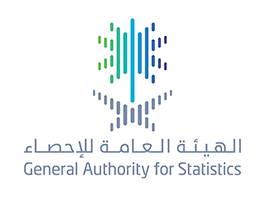
الهيئة العامة للإحصاء تصدر مؤشر الرقم القياسي للعقارات للربع الثاني – 2017م
Based on record data from the Ministry of Justice
GaStat Issued the Real Estate Price Index for the 2nd Quarter- 2017
On Monday 1 Dhu al- Qa’dah, 1438H (July 24, 2017), the General Authority for Statistics (GaStat) issued the Real Estate Price Index in Saudi Arabia, which is based on record data available at the Ministry of Justice about real estate transactions. GaStat described the Real Estate Price Index as an important tool to support stakeholders in making economic and statistical decisions regarding the movements of real estate prices and future forecasts during different periods of time. The index includes three main sectors consisting of several types of real estate: Residential sector consisting of the following types (land, Apartment and house), commercial sector consisting of (land, building, showroom/ store or commercial centre), agricultural sector consisting of one type which is agricultural land.
The Real Estate Price Index showed a decline in real estate prices for the second quarter of 2017, which reached 0.6% compared to the previous quarter (1st quarter 20170) . the index also recorded a decline of 8.6% in the second quarter of 2017 compared to the same quarter last year (2nd quarter 2016).
The report, which was published today, attributed the decline in Real Estate Price Index for the 2nd quarter of 2017 compared to the previous quarter (1st quarter 2017) to the decline witnessed in two of the main sectors comprising the index: the commercial sector 2.2% and the agricultural sector 0.2%, while The housing sector rose 0.2%.
The decline in the Real Estate Price index for the second quarter of 2017 compared to the previous year (second quarter 2016) is the result of the decline in all the main sectors comprising the index: the commercial sector 10.9%, the residential sector 7.9%, the agricultural sector 1.0% .
As part of its duties as an official reference for statistics in Saudi Arabia and as a supervisor and organizer of the statistical sector, the General Authority for Statistics has taken care to monitor the movements of the prices of the constituent units of the real estate sector and monitor the value of their transactions in various regions of the Kingdom and follow the changes that occur from time to time through the statistical product “Real Estate Price Index” which is prepared based on data provided by the Ministry of Justice in this field, within the framework of integration and cooperation between the various governmental bodies aimed at advancing sustainable development in the Kingdom.
This product aims at finding unique real estate indices that measure the performance of real estate market in the Kingdom and fill the data gap in this sector. It is an important tool to support economic decision makers. Its data benefit individuals interested in the economic and statistical analysis of real estate movements and future forecast during different periods of time.
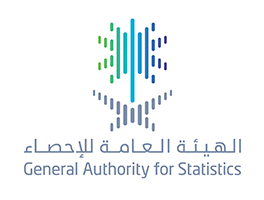
توصيات المنتدى الإحصائي الخليجي الأول
First: Recommendations to improve efficiency of statistical entities:
Second: Recommendations to improve efficiency of statistical products:
Third: Recommendations to follow up indicators of sustainable development:
Fourth: Recommendations to activate statistics technology use:
Fifth: Recommendations to raise statistical awareness:
Sixth: Recommendations to improve private sector efficiency:
Seventh: Recommendation to develop inter-Gulf statistical work:
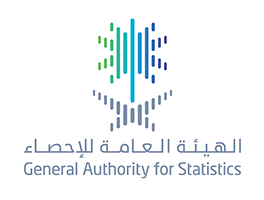
الهيئة العامة للإحصاء تصدر الكتاب الإحصائي السنوي 2016
Including data of more than 57 entities
GASTAT issues the 2016 annual book
The general Authority for Statistics GASTAT issued its annual statistical book (52) of the year 1437/1438H (2016). This book is considered one of the most important statistical products that GASTAT issues to register and document all statistical data and information and present the public and private sectors’ activities. Moreover, it reflects the growth and development rates in demographic, social, and economic fields. The statistical book, which has more than 460 pages, includes the most important data and information of many developmental sectors. Furthermore, it includes the results of the statistical works conducted by GASTAT over one year, in addition to what GASTAT receives from the governmental statistical departments. The data and information have been distributed among 15 chapters. the book also specified 289 tables that contain data and information of more than 57 government entities.
The statistical book data includes statistics of population, education and training, health. Social services, social insurance, transportation and telecommunication, water and energy, labour market, prices and indices, financial and monetary affairs, national accounts, industry, agriculture and hunting, local and foreign trade, and cooperation council. In addition, it includes statistics about natural conditions, thermometers readings, some natural phenomena such as dust, rainstorms, fog, rain quantity, humidity, atmospheric pressure, and wind speed.
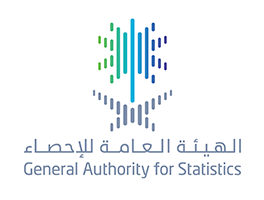
المملكة تشارك في أعمال الدورة ( 48 ) للجنة الإحصائية للأمم المتحدة
To develop the statistical sector and follow up the sustainable development goals
Saudi Arabia participates in the (48) round of the UN statistical commission
Saudi Arabia participates in the 48th round of the UN statistical commission which is currently held in the UN headquarter in New York. The commission works will continue till Saturday 10th of March 2017. The Saudi delegation is headed by Dr. Fahad bin Sulaiman Altekhaifi. Dr. Fahad said that the participation represents part of the general authority for statistics strategy in establishing international collaborations and benefiting from the best statistical practices, so that they can be reflected on the development of the statistical sector in Saudi Arabia. He added, with this participation, Saudi Arabia aims at following up all the developments regarding the sustainable development agenda and the measurement indicators that are approved by the UN statistical commission to measure the progress in achieving economic, social, and environmental goals. In addition to the effective participation that reflects the important role of Saudi Arabia in the international statistics map. The Saudi delegation will also discuss the proposed mechanisms to develop the national statistical systems and methodologies, prepare statistical policies that affect the development process to support decision and policy makers, in addition to the exchange of experiences provided by statistical, developmental, and economic international organization.
On the other hand, Dr. Fahad clarified that this round will discuss many essential topics related to the role of statistical data in the development process, and developing its methodologies and data sources and the way they are published to be available for users on the proper time. Moreover, the round will discuss the agenda of official statistical systems transformation to enable countries to update the statistical process in order to support sustainable development agenda. GaStat will participate in discussing all issues related to prices, national accounts system, economic-environmental accounting, statistical classifications, international trade, weather statistics, disability statistics, IT and telecommunication statistics, big data as a new source of official statistics, and other topics related to quality assurance, official statistics fundamentals, the preparations for the coming HH surveys, and many other topics.
It is worth mentioning that Saudi Arabia has been selected with other (11) countries from all over the world to be a board-member in the international comparison program (ICP) in the United Nations (round 2017-2019). It has been nominated by the UN statistical commission and the data development group in the world bank to represent West Asia countries. Saudi Arabia has been selected for the positive role of the general authority for statistics (GaStat) in the different statistical programs organized by the united nations. The ICP structure includes: UN statistical commission, board of directors (with GaStat membership), and the mutual team works from different agencies and coordination committees and technical consultations. In addition to the international implementing entity (the world bank), the regional offices, Eurostat, OECD, and the national offices and organizations.
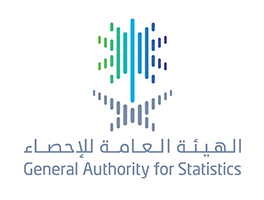
إطلاق مسابقة البحث الإحصائي للشباب.. وجوائز مالية بانتظار المراكز الثلاثة الأولى
Within the activities of the first Gulf Statistical Forum in March
GCC-STAT is launching the Statistical research competition for young statisticians… Cash prizes for the first three winners
The Statistical Centre for the Cooperation Council for the Arab Countries of the Gulf (GCC-Stat) has launched the statistical research competition for young statisticians 2017 which will be held within the activities of the first Gulf Statistical Forum that will take place from March 20th till March 22nd, 2017 in Riyadh city.
The competition aims at reinforce statistical research value, raise the spirit of competition among young statisticians in the GCC countries, discover the statistical abilities and talents of Gulf youth, produce new statistical subjects and methods that keep up with the needs of Gulf societies.
The competition targets young statisticians working in the statistical sector who are GCC citizens, whether working in national statistical centers or in statistical official government institutions. The competition also targets students (GCC citizens) from different Academic institutions such as colleges and universities (public and private).
The statistical center has set two subjects to chose from, the first addresses a new methodology or new statistical methods in official statistics, this includes technical applications that helps in statistical work (such as new methods to collect and disseminate data), while the second subject revolves around the extent of official statistics' contribution in achieving development progress in one of the countries in the region.
To be eligible, the submitter must be a citizen of GCC countries under the age of 35 on February 20, 2017. The submitter must also be working in government official statistical sectors in GCC, including national statistical centers and other official bodies producing statistics, or a student in public or private educational institutions in the GCC countries such as colleges or universities.
The applicant has the right to form his own team , each team is a maximum of three members, the research paper must be new and prepared specifically for the forum competition, and has not been previously presented in another competition or forum or has been published anywhere. It also must be within the subject of the competition and has the specific technical requirements. The applicant must attach a copy of his/her passport and ID.
February 20, 2017 is the last day for submission, and the first three winners will be awarded with cash prizes. Applicants can send their entries to the email: Competition@gccstat.org .
The first statistical forum is held by the General Authority for Statistics and The Statistical Centre for the Cooperation Council for the Arab Countries of the Gulf, under the title "Enhancing the Statistical Partnership to Support Economic Policies and Sustainable Development in the GCC Region", under the high patronage of the Custodian of the Two Holy Mosques, King Salman bin Abdulaziz Al Saud – May God Protect him.
The forum will focus on main aspects; requesting statistical data and information from national growth tracks, sustainable development agenda and emerging international economic issues, negotiating the provision of statistical products and services to support the national growth tracks and sustainable development agenda in GCC countries, and discussing the enhancement of statistical collaborations between data users and producers to support the economic policies and sustainable development agenda in GCC countries.
GCC Statisical Forum Click here
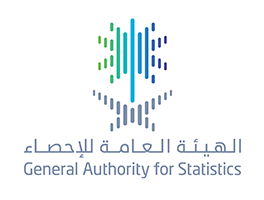
الهيئة العامة للإحصاء: الرقم القياسي لأسعار الجملة ينخفض بنسبة 0.7%
7 sections has decreased, and an increase in the manufactured commodities and fats & oils
Gastat: the Wholesale Prices Index decreases by 0.7%
On Tuesday 21 Rabi'e Al-awwal, 1438 corresponding to December 19 2016, GaStat issued its monthly indicator of the Saudi Wholesale Prices Index of November. It is now published on its official website www.stats.gov.sa. The indicator recorded (160.7) with 0.7% decrease in November 2016, compared to last month (October) in which it recorded (161.8).
The indicator includes ten main sections; Food and living animals section, beverages and tobacco section, raw materials except fuel, mineral fuel and related products section, Fats and oils section, chemical materials and related products, manufactured commodities classified by material section, transportation equipment and machines section, diverse manufactured commodities section, and other commodities section.
The report attributed the increase of the wholesale prices index in November to the decrease of the 6 main sections that constitute this indicator: other commodities by (3.2%), Food and living animals section by (1.8%), transportation equipment and machines section by (0.8%), chemical materials and related products by (0.4%), miscellaneous manufactured commodities section by (0.3%), beverages and tobacco section by (0.1%), raw materials except fuel by (0.1%),. On the other hand, 2 of the main sections have increased: manufactured commodities classified by material section by (0.2%), fats and oils section by (0.1%), whereas the mineral fuel and related products section remained the same without any changes.
The authority indicated that the Saudi wholesale index measures the average of change in the prices of commodities and services that are sold in the primary markets. What matters here is the price change only. Therefore, the changes that result from the differences in quality, quantity, shipping method, or any other influencing factor in order to get the net price are excluded. This index is provided to everyone, and conducted all over Saudi Arabia.
It is worth mentioning that the wholesale price index is used to record any change in the prices of local or imported commodities. In addition, it monitors the price trends and the status of markets and costs of living. Furthermore, it is used in preparing the national accounts by protecting the income and national aggregates from the influence of price change.
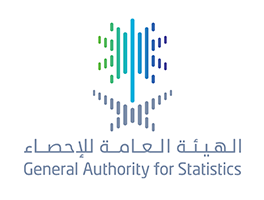
الهيئة العامة للإحصاء: انخفاض مؤشر الرقم القياسي لتكلفة المعيشة لشهر نوفمبر (0.2%)
(6) sections decreased, and (3) rose
"GaStat" : The indicator of the Cost of Living Index decreases in November by (0.2%)
On Monday 20th of Rabi'e Al-awal , 1438 corresponding to December 19, 2016 the General Authority for Statistics (GaStat) issued the monthly indicator of Saudi cost of living index for the month of November. It is now published on its website www.stats.gov.sa . The index recorded a decrease of (0.2%) compared to the previous month (October 2016).
The monthly report indicates that the Saudi cost of living index has reached (137.5) in November 2016 compared to (137.8) in last October , recording a decrease of (0.2%). The report attributed the monthly decrease to the decline of the six main sections that constitute this indicator: food and beverages by (0.6%), clothes and shoes section by (0.6%), furniture, appliances, and maintenance by (0.5%), culture and recreation by (0.4%), health by (0.2%), finally, communication section by (0.2%).
On the other hand, 3 of the main sections have witnessed an increase, which are: the transportation section by (0.2%), restaurants and hotels by (0.1%), and the commodities and commodities and miscellaneous services by (0.1%). Whereas, the sections of tobacco, housing, water, electricity, gas, and other types of fuels , and education remained the same with no any relative changes to mention.
The cost of living general index issued monthly by GaStat aims at providing data about the prices of commodities and services that are in the consumer basket. It also aims at providing data about the cost of living indices within a time series. (The consumer basket) refers to the actual group of commodities and services that are recorded during the household expenditure and income survey. The relative distribution of the commodities and services consumption inside the consumer basket is extracted to make it the base stone in the process of indices calculation. The cost of living indices are used to measure any change in the prices of commodities and services that are purchased by consumer. Moreover, it is used as an accurate indicator that measures the economic inflation and recession. It is also used in statistical and economic analyses that are associated with prices movement and anticipations in different times. Data are collected by conducting interviews. The sources addresses are clarified to the interviewers to facilitate their task. The sources distribution in one city must cover all available commodities and services with all levels.
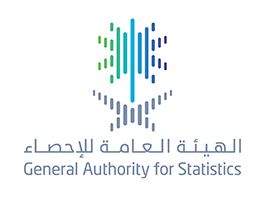
الهيئة العامة للإحصاء: 1125 فريق رياضي يجري 4220 مباراة في عام 2015
Issuing an indicator about the numbers of sports federations, clubs, stadiums, matches, and sports teams
GaStat: 1125 teams played 4220 matches in 2015
On Monday, 6 /Rabe'a First/ 1438 corresponding 5/ November /2016, GaStat issued an indicator about the numbers of sports federations, clubs, stadiums, matches, and sports teams (2011-2015) classified according to Saudi Arabia's administrative regions and their sports federations, ordinary clubs, and disabled and deaf people clubs. The indicator clarifies the number of matches of all individual and group games, in addition to the number of stadiums for each kind of games including closed area stadiums. It also clarifies the number of sports teams.
The indicators states that the number of sports federations in Saudi Arabia has increases from 30 federations to 35 federations in the period (2011-2015). However, the number of clubs including disabled people clubs reached 188 clubs with 1125 sports teams. 4220 matches have been played in 387 closed and open stadiums.
Riyadh region registered the highest numbers in the indicator results with 35 sports federations, 47 clubs, 722 individual and group matches, 99 stadiums for all kinds of games, and 285 teams in 2015.
In its published indicator, GaStat said that sports statistics are one of the most important cultural indicators locally, regionally, and internationally. GaStat started collecting sports data from their official reference. Furthermore, it revealed that the indicator presents all changes in the numbers of sports clubs ,federations, and teams, in addition to the developments in stadiums during the last five years.
It is worth mentioning that this indicator was launched as part of the 45 statistical products announced lately by GaStat. Their launching constitute the first stage of the new products which include economic, social, demographic, Omrah, and labor market statistics. In addition to other statistics related to energy, knowledge, environment, culture, sport, entertainment, security, and safety.
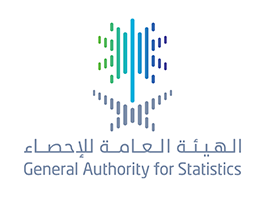
الهيئة العامة للإحصاء : 43.5 مليار ريال قيمة الصادرات النفطية لشهر سبتمبر 2016
GaStat: The cost of oil exports in September 2016 is 43.5 billion SAR
On Wednesday, the 1st of Rabe'a first 1438 corresponding 2016/11/30, GaStat has issued two indicators; (oil exports in September 2016) and (The percentage of non-oil exports to non-oil GDP in the second quarter of this year). The cost of Saudi oil exports reached 43.5 billion SAR in September. Therefore, Saudi oil exports have increased by (6.2%) compared to the same month of last year ( September 2015). In this way, oil exports constituted (81.5%) of all exports. According to the indicator descriptive data, oil exports include mineral fuel, mineral oil, distillation products, bituminous materials, and mineral waxes. The exports are composed of local commodities exports ( national exports) and foreign commodities exports ( re-export). (oil exports) indicator showed that national exports refer to all commodity exports that are locally produced and manufactured, or those which undergone manufacturing procedures that changed their shapes and cost. However, the (re-export) indicated in the ( oil exports) indicator means exports of previously imported commodities without any clear modifications.
As for the indicator of non-oil exports to non-oil GDP, GaStat revealed that non-oil exports constitute (10.0%) of non-oil GDP in the second quarter of 2016, compared to (11.2%) in the same period of last year. This decrease is attributed to the decrease of non-oil exports (9.8%) compared to the increase in non-oil GDP (1.0%) during the same period.
The published report defined non-oil exports as all exports excluding oil commodities exports. According to the same indicator, non-oil GDP is defined as part of GDP resulted from non-oil sector using current prices, it does not include import taxes. On the other hand, the annual change mentioned in the same indicator means growth on an annual basis. It measures the statistical change during a ( month or quarter) compared to the same period of last year.
It is worth mentioning that these indicators were launched as parts of the 45 statistical products announced lately by GaStat. Their launching constitute the first stage of the new products which include economic, social, demographic, Omrah, and labor market statistics. In addition to other statistics related to energy, knowledge, environment, culture, sport, entertainment, security, and safety.
Download ( Excel | PDF ): Oil Exports, September 2016
Download ( Excel | PDF ): Ratio of Non-oil Exports to Non-oil GDP, 2nd Quarter 2016
See more new indicators please click here
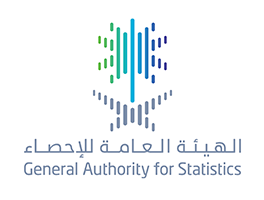
"الصين" الوجهة الرئيسية للصادرات السعودية بقيمة (6693) مليون ريال
Issued its two indicators "exports and imports 10 key partner countries" and the "balance of trade" of Saudi Arabia
"China" the main destination for Saudi exports with a value of SAR (6693) million
On Tuesday Safar 29, 1438H, corresponding to November 29, 2016 the General Authority for Statistics (GaStat) has issued its two indicators: (Trade directions of the top 10 partner countries for exports and imports of Saudi Arabia) and the (balance of trade) until the end of September 2016 on its official website www.stats.gov.sa. The country direction's report considered China as the main distention for exports in Saudi Arabia as the value of Saudi exports to China has reached (6693) million riyals. On the other hand, the (balance of trade) indicator showed a surplus in the Saudi balance of trade in the amount of (22470) million riyals.
The results of the foreign trade directions for the top 10 partner countries in Saudi exports and imports indicator showed that Chins is the main distention for exports in Saudi Arabia as the value of Saudi exports to China has reached (6693) million riyals, making it the main distention for exports, followed by Japan and South Korea with a value of (5913) million riyals and (5106) million riyals, respectively. Unites States, India, United Arab Emirates, Singapore, Taiwan, Netherlands and Bahrain are within the 10 top export destinations. The total amount of Saudi exports to those 10 countries has reached (37709) million riyals, representing (70.6%) of total exports.
In September 2016, the value of imports from the United States has reached (5273) million riyals which makes it in the first place for Saudi imports, followed by China and United Arab Emirates with a value of (4540) million riyals and (1842) million riyals, respectively. Germany, Japan, South Korea, India, Italy, France and Brazil are amongst the top 10 import destinations. The Saudi total imports from these countries has reached (20227) million riyals, representing (65.3%) of total imports.
In its report issued today, GaStat has mentioned the lists of the top 10 exports and imports has been prepared separately, and the top 10 exports/imports countries are the countries with the highest exports/imports values determined by the descending order of countries by the value of exports/imports for the period of study.
In its report, GaStat noted the metadata and used definitions. The report showed that the total exports means the local commodity exports (national exports), and the foreign commodity exports (re-export). The assessment is based on free on board (FOB). The national exports are export of all commodities which has been produced or manufactured locally or has been gone through industrial processes that has changed its shape and value. And re-export concept refers to the exports of formally imported commodities without any obvious amendments. Finally, imports refer to all commodities entering Saud Arabia to meet the local needs after going through customs. Import of services is not included. The assessment is based on the Cost, Insurance and Freight (CIF).
According to GaStat balance of trade, in 2016, the Saudi exports and imports have reached (53423) million riyals and (30953) million riyals, respectively. This led to surplus in the balance of trade in the amount of (22470) million riyals compared to the same month last year (September 2015) which was (6323) million riyals.
In its report of metadata and used definitions, GaStat clarified that the term balance of trade means net exports, which is the difference between exports and imports of the country in certain period of time. This shows if the country has a surplus (exports greater than imports) or a deficit (imports greater than exports) in its foreign trade.
It is worth mentioning, that launch of the two new indicators by GaStat comes within the framework of supporting national development. GaStat announced earlier the launch of more than 45 new statistical products which included: economic, social, demographic Umrah, labour market, energy, knowledge, environment, culture, sports, entertainment, and Security and safety statistics.
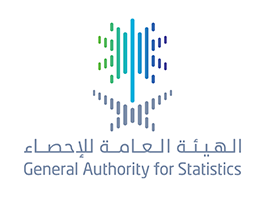
الهيئة العامة للإحصاء : (27.46%) معدل إجمالي الادخار إلى الناتج المحلي الإجمالي في الربع الثاني من 2016م
GaStat: Gross savings rate to GDP in the second quarter of 2016 is (27.46%)
On Thursday 1438 -Safar-24, corresponding 2016-November-24, GaStat has issued the indicator of ( Gross savings rate to GDP) of the second quarter of 2016. It has been published on GaStat official website www.stats.gov.sa. The gross savings rate to GDP of the second quarter recorded an increase of (4.02%) registering (27.36%) compared to the same period of last year in which it registered (26.40%).
Download:Gross Savings for 2nd Quarter 2016 Please click here
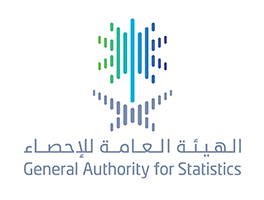
الهيئة العامة للإحصاء تبدأ اليوم بخمسة أعمال إحصائية لدعم التنمية الاجتماعية والاقتصادية
Targeting (33500 HH, (15600 establishments), and lasting for (37) days
GaStat begins five statistical works to support social and economic development
On Sunday 13 Safar 1438 H corresponding 13 November 2016, GaStat starts visiting households and establishments all over Saudi Arabia to implement a number of field works associated with five statistical surveys. Therefore, GaStat asks all citizens and residents either individuals or institutions to cooperate with the statisticians who work in the field in all (13) Saudi regions including cities and governorates. The statistical works will last until 20 Rabe'a first 1438 H corresponding 19 December 2016. These works are targeting more than (33500 HH) and (15600 establishments), and conducted by (650 statisticians).
Taiseer Almufarrij, GaStat spokesman said that the first work will be the labor force survey of the fourth quarter of 2016. This survey will last for 24 days aiming at providing detailed data about the national labor force, measuring the employment and unemployment rates, providing data about the employed and unemployed persons, identifying the employed persons' monthly wage average, in addition to providing data about the employed persons' actual weekly working hours by occupation and economic activity, and data about regular and irregular laborers. The results of these works are essential in making developmental resolutions. However, (Omrah) survey works will begin at the same time of labor force survey works. They aim at building a database about the numbers of Omrah performers, providing accurate statistics about Omrah performers from Saudi Arabia along with foreign Omrah performers to support the 2030 Saudi vision indicators and the developmental resolutions associated with the two holly mosques.
As for the economic statistical works, GaStat spokesman revealed that the economic indicators research works will start during this week. It targets the non-profit public and private establishments. Moreover, the establishments' industrial production research will start, targeting the establishments that work in manufacturing and extractive industries, electricity, gas, and water. This research aims at providing detailed economic data about all establishments. In addition, the direct foreign investment survey will begin, targeting the foreign investment establishments for the purpose of providing detailed economic data about public and private establishments which help in identifying the direct foreign investment indicators in Saudi Arabia.
GaStat confirmed that all data are treated as informational base that developmental resolution makers in all related governmental entities can rely on. It is important to note that all statisticians are holding official cards and are officially charged with collecting data, so that they can be saved and treated with total confidentiality according to the general statistics system issued by the ministers cabinet. Through its website www.stats.gov.sa, the authority gives everyone an opportunity to view the field research forms, depending on which data are going to be collected. All households and establishments are welcome to call us on 8001240440 for any enquiry about these works or any other work.
It is worth mentioning that GaStat are following certified international standards in selecting samples of all its statistical works as they are considered part of the selected statistical community. These samples must represent the studied community. They also must have the community features, so that their results can be published as official statistics on the authority official website.
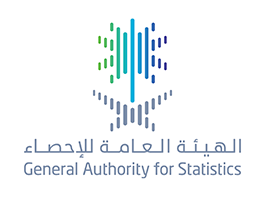
الهيئة العامة للإحصاء تطلق الإصدار الثاني من بوابتها الإلكترونية
5 new features enable the authority clients to get statistical products using Arabic and English languages
GaStat launches the second version of its electronic portal
GaStat launched the second version of its electronic portal www.stats.gov.sa . 5 new features were added to enable the clients from both public and private sectors, decision makers, and researchers to get statistical data, bulletins, and reports issued by the authority in Arabic and English.
The authority asserted that the second version is one of the authority's developmental efforts in providing updated, accurate, comprehensive, and credible statistical products and services that have an added value according to the best international standards and practices.
Through its portal, the authority presents its statistical products and services, so that it becomes a digital database for a lot of developmental fields. The statistics and data come in multimedia and templates that help in supporting the developmental decisions, provide those who are interested in statistics with proper knowledge, and help media in raising the statistical awareness using many interactive windows. The second version was developed to facilitate reaching the indicators and information by focusing on five new features. In this version, there is a new interface for the statistical library which displays the statistical products classified by the product issuance period and issuance periodicity ( monthly, quarterly, or annual). The second feature is the possibility of displaying 35 statistical products. However, the third feature aims at providing statistical products issuance methodologies and field survey forms, so that clients, specialists, academics, and researchers can overview the forms used in the field surveys. As for the fourth feature, it provides a separate section for the statistical products and bulletins' dates of releases. This collaborates in achieving the authority values which include independency and transparency. The fifth feature is the ability to download the products in "Excel" and "PDF" format, so that decision makers, specialists, and researchers can download and use the files to select the appropriate indicators.
It is worth mentioning that GaStat official website was designed in a way that enables everyone to browse it using computers, laptops, tablets, and smart phones.
